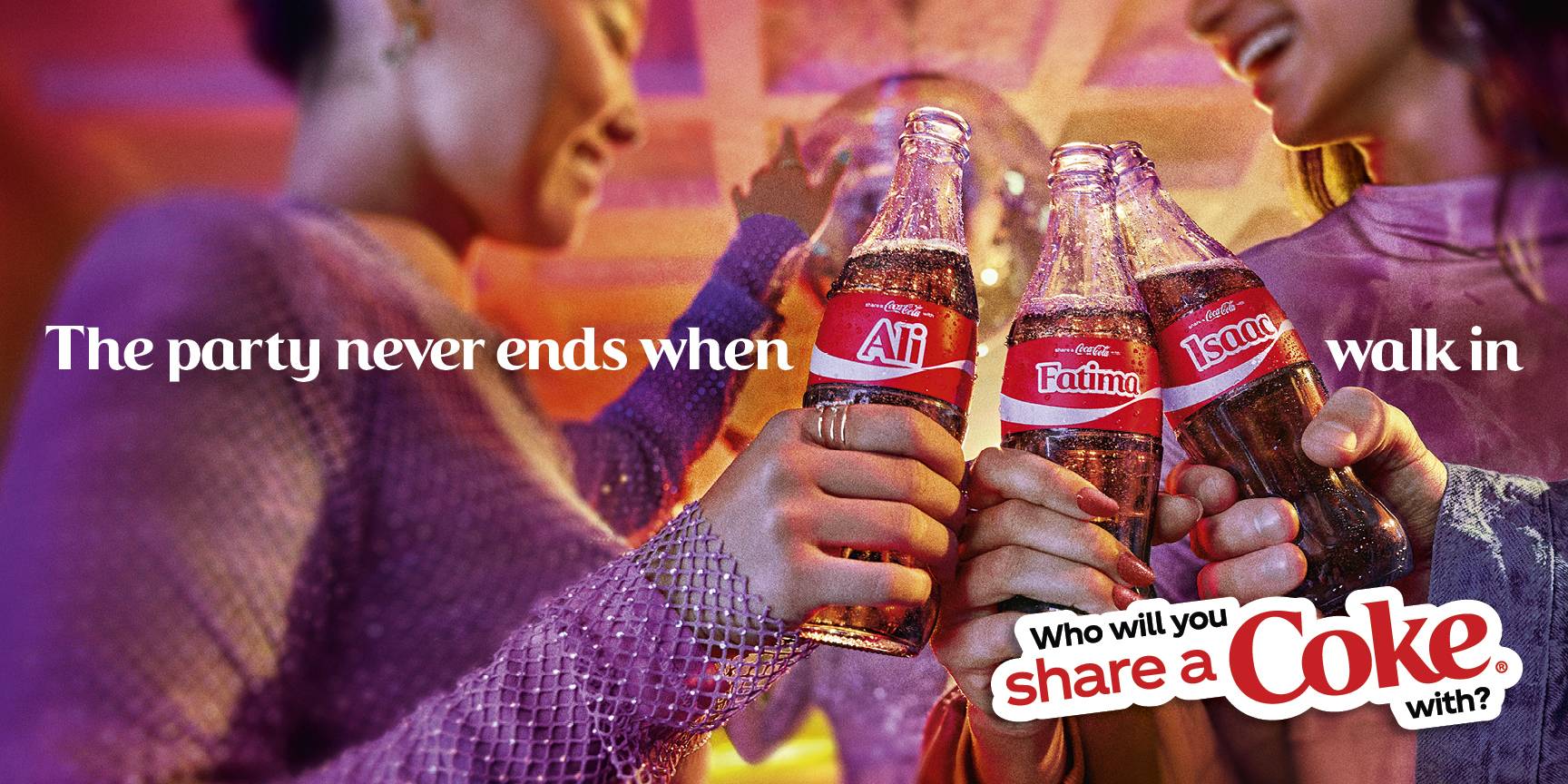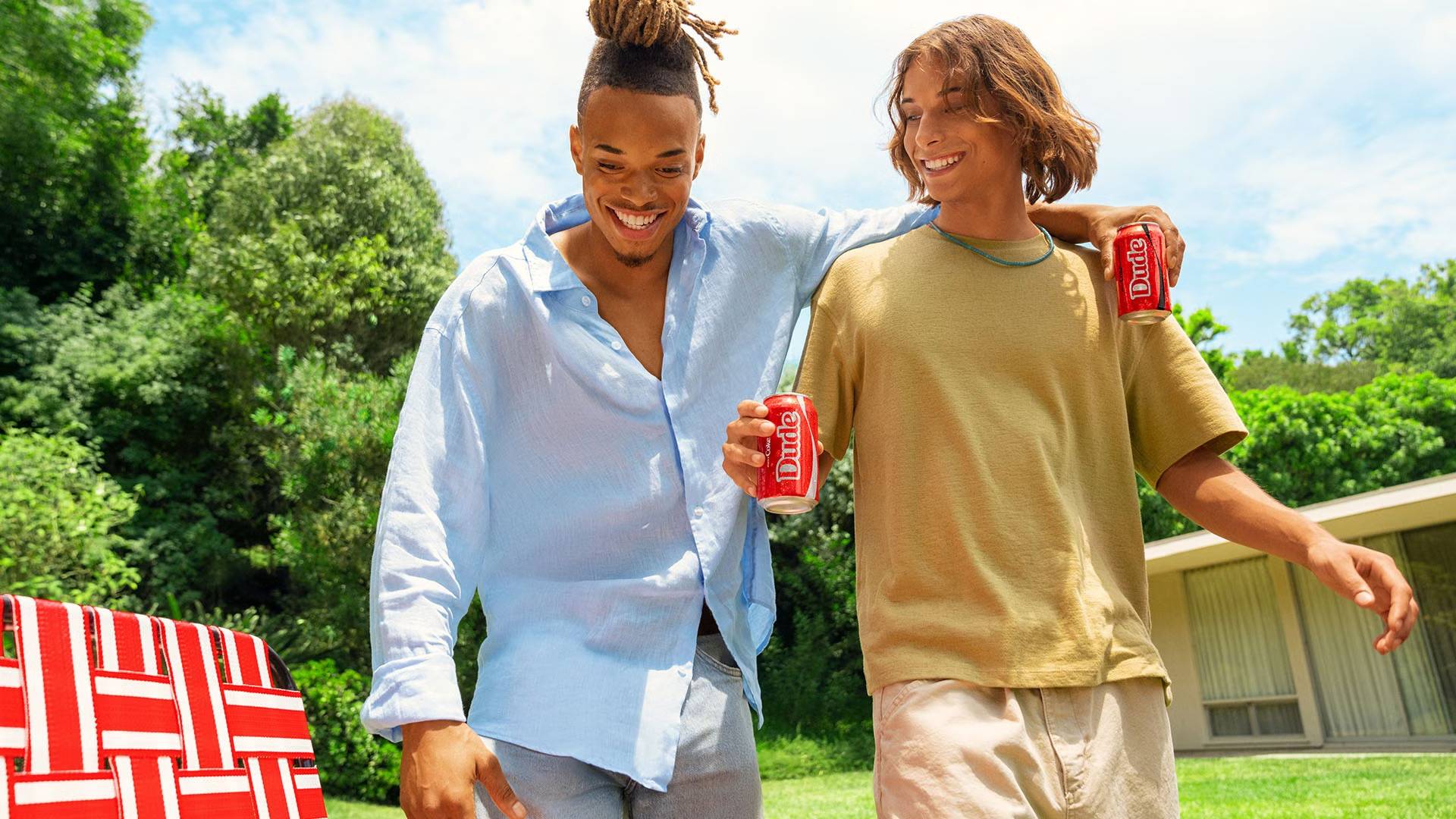The origins of ‘Share a Coke’
The original “Share a Coke” campaign was first introduced in Australia in 2011. Replacing the brand’s logo with popular names on bottles, it became an instant success. In Australia alone, over 250 million bottles were sold, and the campaign expanded to 70 countries around the world. The campaign built a strong emotional connection with consumers by offering a personalised and fun experience that encouraged people to share their Cokes with others.
The 2025 relaunch: adding a digital twist
While the central concept of personalised bottles with names remained, Coca-Cola introduced several new features to resonate with a more digitally engaged audience:
- Expanded Name Range: This time, Coca-Cola expanded the range of names, making it more inclusive and appealing to a global audience.
- Memory Maker: A new QR code on each bottle allows users to upload photos or videos to a shared feed, creating a more social experience.
- Customisation Platform: Fans can personalise their own Coke bottles online, adding names or phrases.
- McDonald's Partnership: An exclusive meal bundle with McDonald's had also added a layer of in-person interaction, encouraging group experiences at the restaurant.
These changes reflect Coca-Cola’s attempt to modernise the campaign, particularly by tapping into the digital behaviours and social habits of Gen Z.
Balancing digital trends with nostalgia
Coca-Cola’s 2025 relaunch of "Share a Coke" aimed to capture Gen Z’s love for technology, social sharing and personalisation. By introducing digital features such as QR codes for photo sharing and online bottle customisation, the campaign sought to create a more connected and interactive experience. However, as Gen Z is already well-versed in personalised digital interactions, these new features might not have the same impact as they did when the campaign first launched.
Nevertheless, the relaunch succeeded in tapping into the emotional connection many Gen Z and Millennial consumers have with the original "Share a Coke" campaign. The nostalgic appeal of seeing one’s name on a bottle still resonates strongly. Additionally, the partnership with McDonald's played a key role in engaging Gen Z, who values social experiences and spending time with friends in public spaces. This collaboration enhanced the campaign's appeal by aligning with Gen Z’s desire for unique, in-the-moment experiences.
While Coca-Cola’s digital innovations were a step in the right direction, QR codes and online customisation are now standard in marketing. To maintain long-term engagement, Coca-Cola will likely need to explore more creative and immersive ways to keep the campaign fresh and compelling for a generation that demands constant innovation.
The 2025 relaunch of "Share a Coke" demonstrates how a timeless campaign can evolve to appeal to a new generation. While Coca-Cola introduced several features to cater to Gen Z’s digital preferences, the heart of the campaign remains rooted in personalisation and connection. By blending nostalgia with modern elements, Coca-Cola has shown how classic campaigns can stay relevant while adapting to contemporary trends.
Beatriz Barot on April 2nd, 2025

